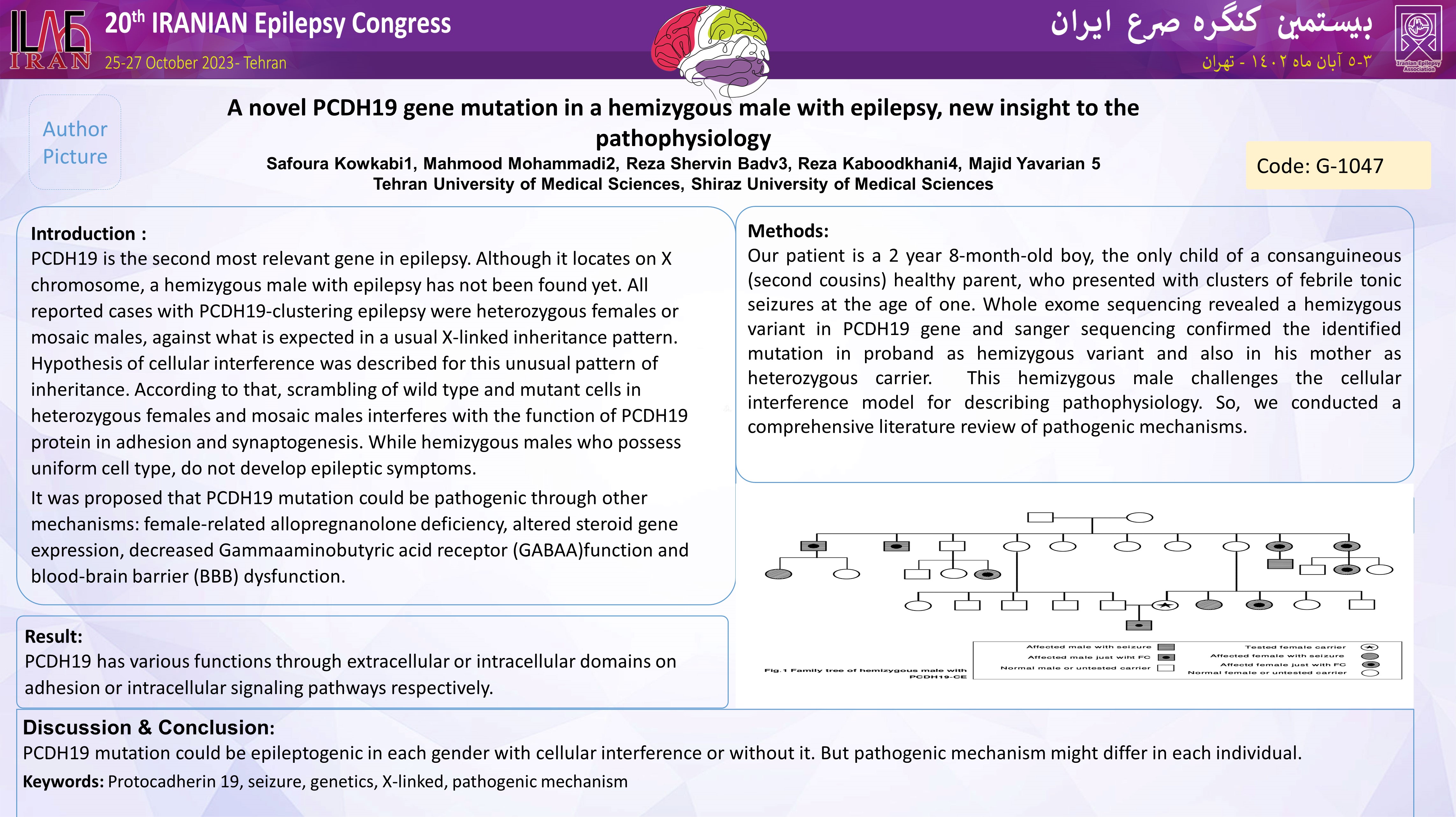A novel PCDH19 gene mutation in a hemizygous male with epilepsy, new insight to the pathophysiology
کد: G-1047
نویسندگان: Safoura Kowkabi © ℗, Mahmood Mohammadi , Reza Shervin Badv, Majid Yavarian , Reza Kaboodkhani
زمان بندی: زمان بندی نشده!
دانلود: دانلود پوستر
خلاصه مقاله:
خلاصه مقاله
Background and Aims: PCDH19 stands as the second most relevant gene associated with epilepsy. Despite its location on the X chromosome, the existence of hemizygous males with epilepsy has remained elusive. All reported cases of PCDH19-clustered epilepsy have thus far involved heterozygous females or mosaic males, which deviates from the anticipated pattern of X-linked inheritance. An intriguing hypothesis of cellular interference has been proposed to account for this unusual inheritance pattern. According to this theory, the intermingling of wild-type and mutant cells in heterozygous females and mosaic males disrupts the function of the PCDH19 protein in adhesion and synaptogenesis, ultimately leading to epilepsy. In contrast, hemizygous males, who possess a uniform cell type, do not manifest epileptic symptoms. However, alternate pathogenic mechanisms for PCDH19 mutations have also been suggested, including female-related allopregnanolone deficiency, altered steroid gene expression, compromised Gamma-aminobutyric acid receptor (GABAA) function, and blood-brain barrier (BBB) dysfunction. Methods: Our patient, a 2-year and 8-month-old boy and the only child of consanguineous parents (second cousins), presented with clusters of febrile tonic seizures at the age of one. Whole exome sequencing identified a hemizygous variant in the PCDH19 gene. Sanger sequencing subsequently confirmed this mutation as hemizygous in the proband and heterozygous in his mother, who served as a carrier. The existence of this hemizygous male challenges the prevailing cellular interference model used to describe the pathophysiology of PCDH19-linked epilepsy. Consequently, we undertook a comprehensive literature review to explore alternative pathogenic mechanisms. Results: PCDH19 exhibits diverse functions mediated through extracellular or intracellular domains, impacting adhesion or intracellular signaling pathways, respectively. Conclusion: PCDH19 mutations can precipitate epilepsy in individuals of any gender, whether with or without cellular interference. However, the specific pathogenic mechanisms may vary among affected individuals. Keywords: Protocadherin 19, seizure, genetics, X-linked, pathogenic mechanism
دیدگاه ها (0)
ارسال یک دیدگاه
ارسال دیدگاه توسط مدیریت بسته شده است.
